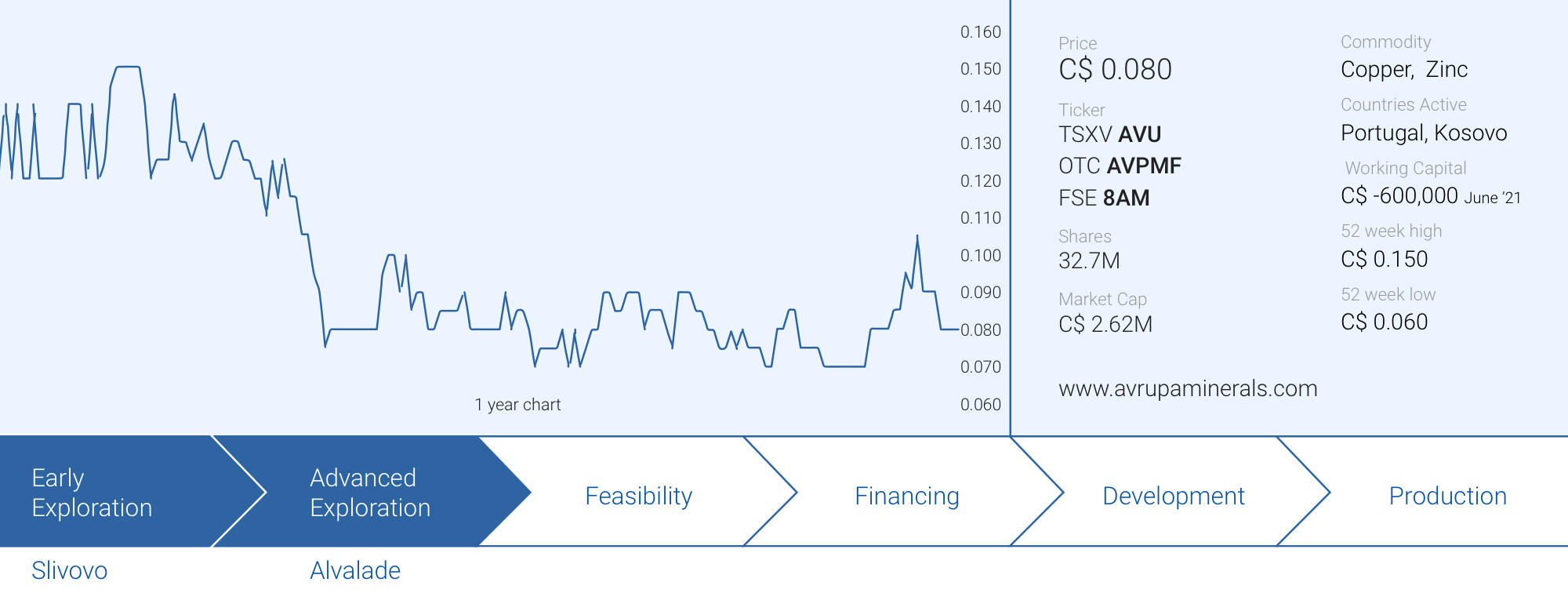
About two years ago, junior exploration company Avrupa Minerals (AVU.V) signed a joint venture agreement with MATSA, an experienced copper producer in the Iberian Pyrite Belt. Through the JV, MATSA is able to acquire a majority stake in Avrupa’s Alvalade project in Portugal. Both partners have been working hard on figuring out what Mother Nature has been hiding at depth. A drill program has been in full swing for about a year now, and the results so far have been encouraging.
We sat down with CEO Paul Kuhn of Avrupa Minerals to discuss the importance and meaning of the recent drill results, and in what direction he sees the company evolve from here on.

Alvalade – Exploration
Time flies and it has been two years since you announced MATSA as your joint venture partner and of course COVID wasn’t particularly helpful either. You started drilling the 8 Lens in November last year and a second phase program was kicked off in June of this year. In between both drill programs you also completed a VTEM survey. Could you perhaps walk us through the exploration approach here? What’s the strategy to try to improve your success ratio?
Actually, the drilling with our partner Minas de Aguas Teñidas, S.A. (MATSA) has been progressing continuously since November of last year. For a variety of reasons, we started with the 8 Lens and have moved southwards towards the discovery area around the 2 Lens. While drilling the 8 Lens we learned a lot about the characteristics of the target mineral horizon and how to better place our drill holes to find it. We’ve been rewarded with increased intercept width and better grades as we move south.
The target horizon is a highly-folded and -faulted unit of black shales, often graphitic, found in the lowermost part of the VS (Volcano-Sedimentary) Formation that hosts massive sulfide mineralization in the Iberian Pyrite Belt (‘IPB’) that stretches basically from southeast of Lisbon, through Portugal and Spain to past Seville. It is estimated over time there exists(ed) upwards of 2 billion tonnes of massive sulfide material in the IPB. The mineralization has been exploited from before Roman times, and presently there are seven active mining operations in the IPB: Aljustrel and Neves Corvo in Portugal, and Aguas Teñidas, Magdalena, Sotiel, Rio Tinto, and Las Cruces in Spain.
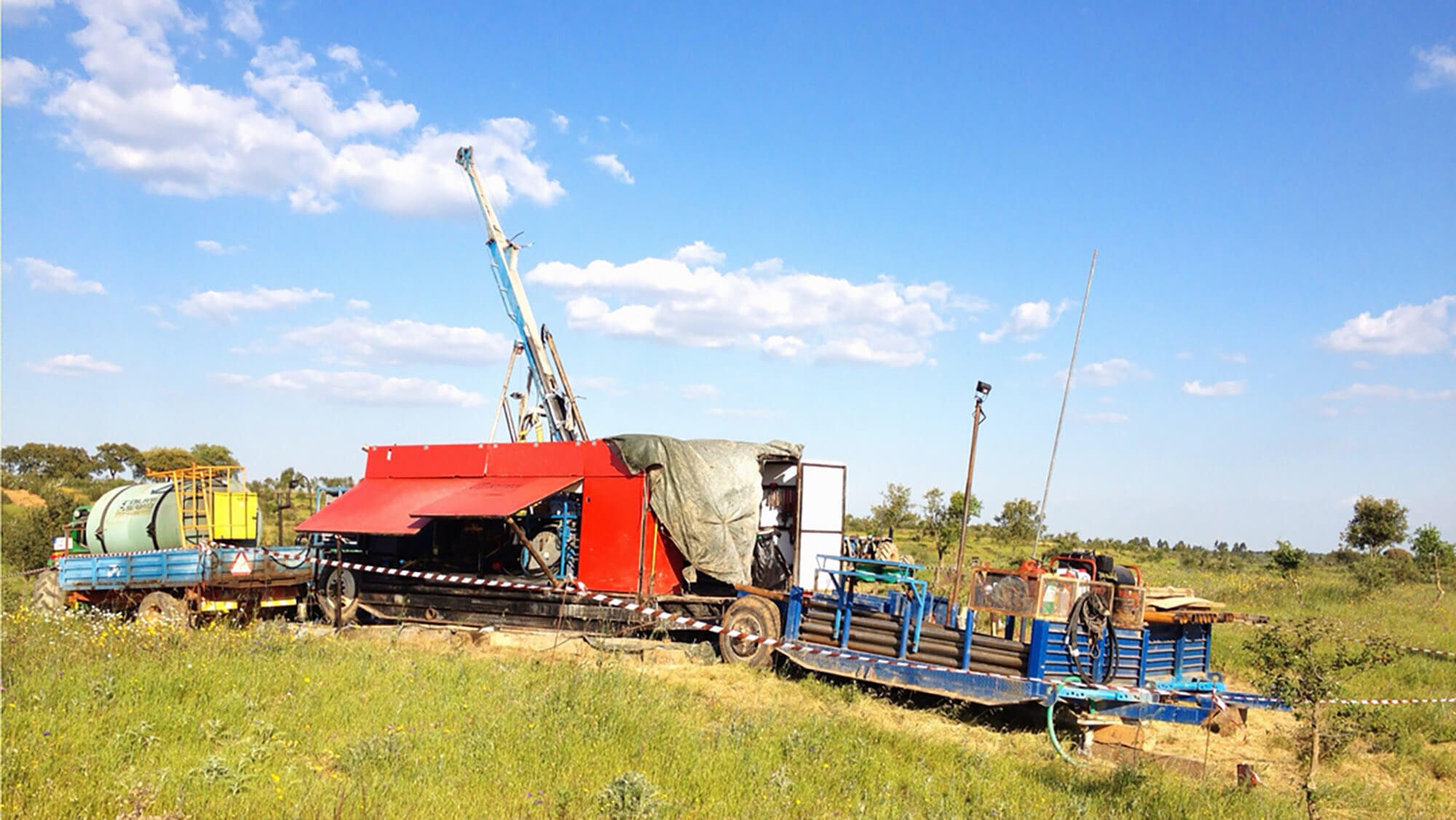
Avrupa discovered the Sesmarias massive sulfide deposit in 2014 with a previous partner and since that time, we have drilled 45 holes over a strike length of 3 kilometers to a depth of 700 meters in some cases. The discovery area is covered by 75-125 meters of recent gravels and sediments before hitting real Paleozoic-age rocks. Because of the extensive cover, getting a real hang of the geology and structure can really only be done by drilling with some ancillary help from geophysical and geochemical methods. Our target is generally deep and each hole may take up to 3 weeks or more, if there are no drilling issues. Hence, the long time in reporting of results.
While the Sesmarias drilling has continued, we have been able to perform other exploration tasks including the VTEM survey mentioned above. The results came back to us in March, and we have been doing surface follow-up work since then to acquire real drill targets along the length of the survey. Now that we have a second drill rig, we are starting to drill some of the better geophysical targets, if supported by positive soil geochemistry and geological mapping. We will be starting in the north of the license around the historic Caveira Mine area and working our way to the south to the historic Lousal Mine area with this second drill.
The results of a combination of much better understanding of the target geology through drilling at Sesmarias, the complete re-logging of historic Sesmarias area and Caveira area drilling, along with the start of logging of holes from other areas, surface mapping, and an extensive program of soil sampling over the VTEM anomalies has made our targeting process move along quite well. We have found that the geology from Sesmarias to Caveira is quite similar, so we have a much better idea on how to interpret the information and turn it into drill collar locations. It has been a slow process, but now we are moving ahead outside of Sesmarias.
Finally, we have gotten the access permission from the principal landowner covering the 2 Lens and part of the 10 Lens area, so we will be able to continue to move south at Sesmarias from the 8 Lens area to where the original high-grade copper-zinc discovery drilling took place.
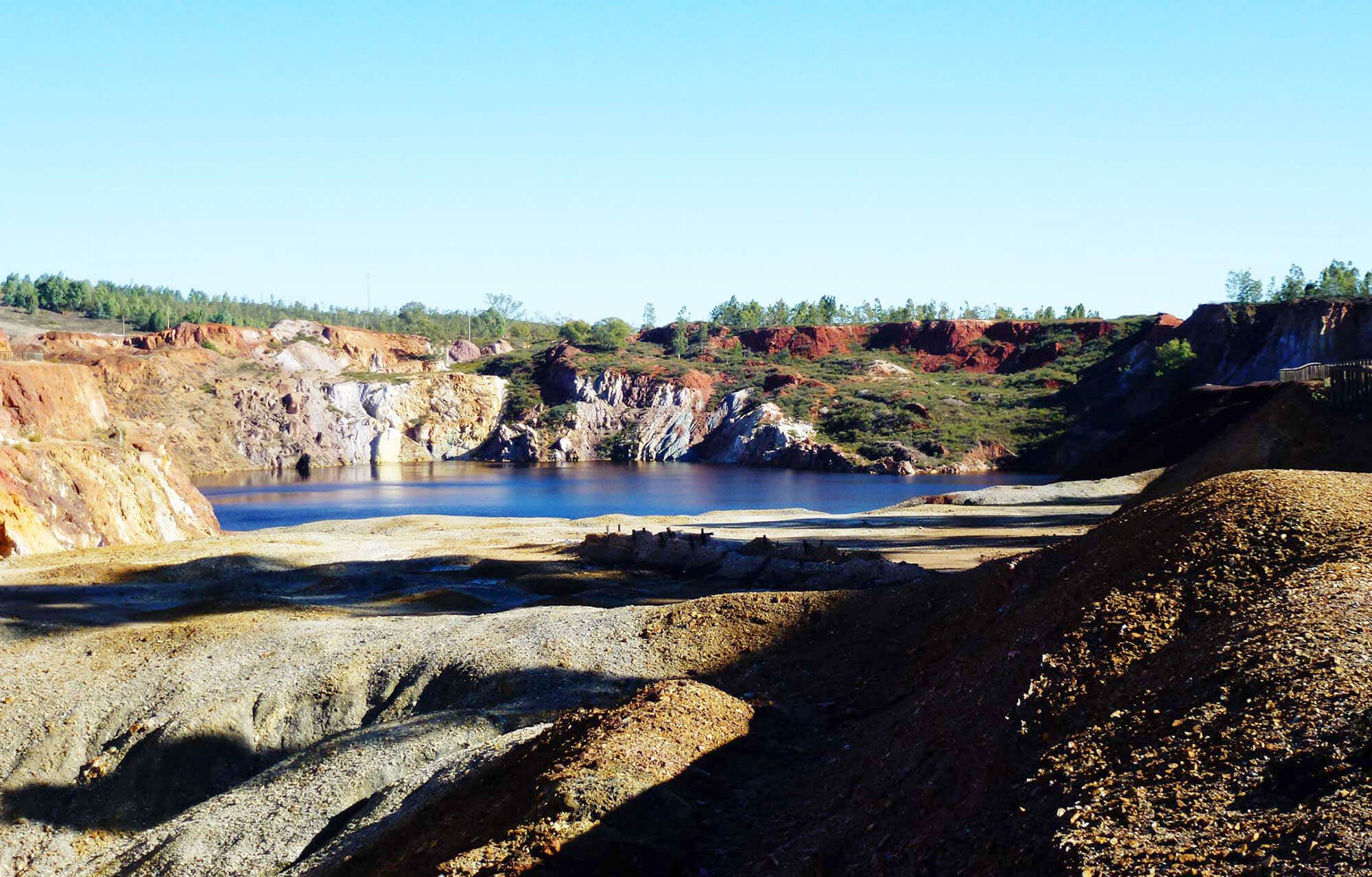
The initial holes were encouraging with massive sulfide encounters over very nice widths in holes 33 and 36. And we are particularly charmed by the results from a month ago where especially hole 39 was very intriguing. It looks like you are now following the traces of the system towards the southeast as you have not closed off that direction yet. In fact, it looks like those three holes were a massive step-out from the four areas you drilled before. Could you elaborate a bit on how important the September drill results are for the exploration theory?
Well, the obvious importance is the increasing grade and thickness of the lens(es) as we head south towards the 2 and 10 Lens areas. The system shows massive sulfide mineralization for more than 1.2 kilometers past where we are now. And we are understanding the “lenses” equate to mineralization on both limbs of the controlling fold geometry. When we start drilling in the original discovery area around SES002 (2 Lens) and SES010 (10 Lens), we really hope to see better copper and zinc grades, along with thick intercepts. The geological team has really been working hard at unraveling the highly contorted mineral horizon target, and so far, we are seeing improved results as we improve our understanding of the Sesmarias system. This understanding will really help us in our other areas around Caveira, Lousal, and Monte da Bela Vista.
Is it fair to say the mineralization you encountered should be considered a new lens? Or is this just the continuation of the 8 Lens?
A bit of both: On one side, the east limb, of the controlling fold structure would be the 8 Lens. We discovered mineralization on the other limb of the fold in SES21-040, and this might be construed as a whole new lens, though we hope to find mineralization in the fold hinge, as well. The massive sulfide intercept in 040 is on the west limb of the fold, and may possibly hook up with the 10 Lens, intercepted some 500-1200 meters to the south.
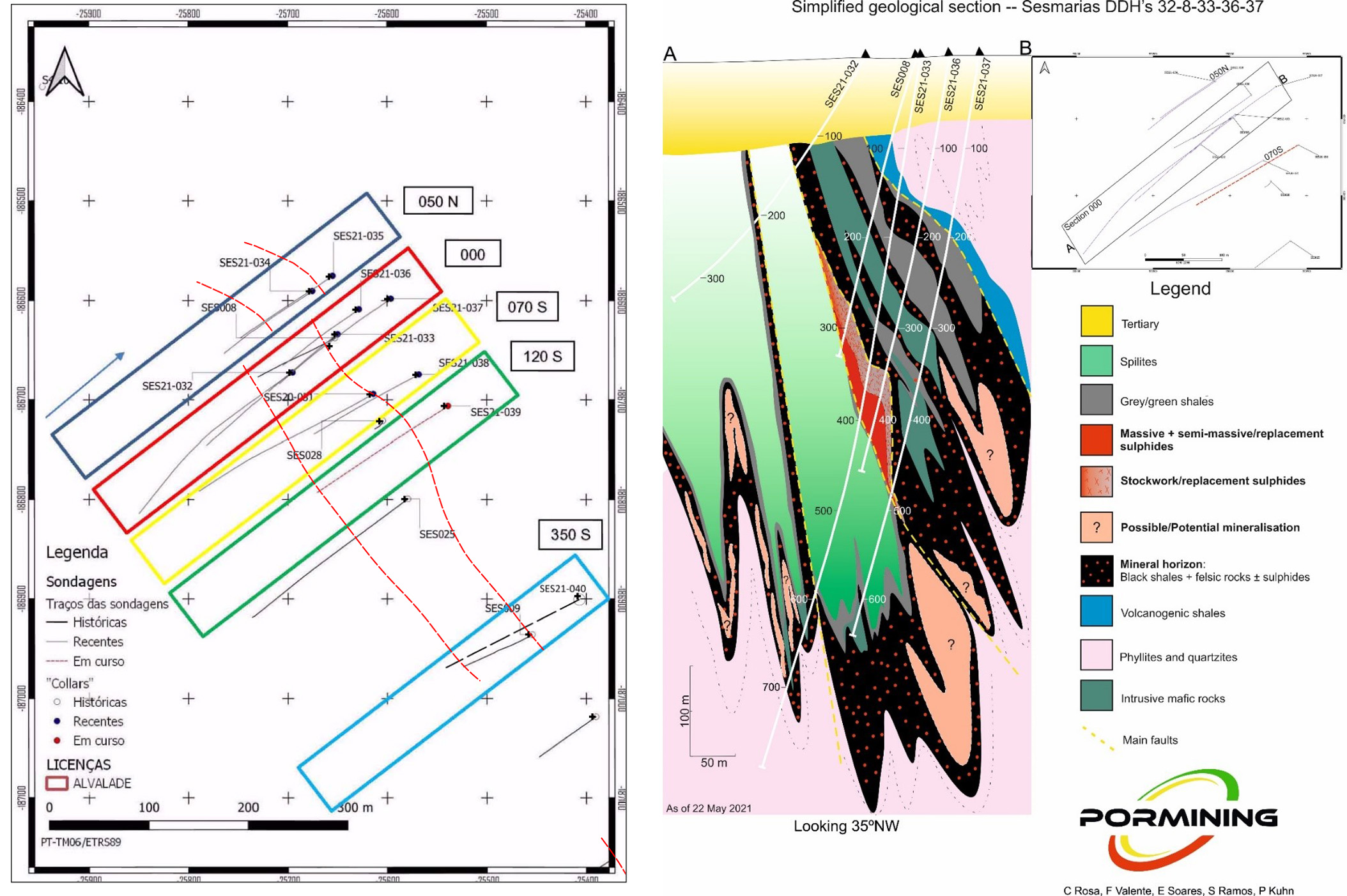
If it’s a new lens, can you draw any conclusions for the future of the project? Does it tell you anything on how the lenses are stacked and if there could be more lenses that are currently still undiscovered?
A plan view of the mineral zone at Sesmarias, or elsewhere on our license, like at the old Lousal Mine, would suggest a bunch of lenticular mineral bodies. However, we are finding that the “lenses” are actually layers of massive sulfide mineralization that occur in heavily folded rocks, that would give a sort of “stacked” appearance when projected to the surface in a plan view. Since we see this pattern from north to south on the property, and we know what unit to target, there appears to be lots of potential along the strike of the black shale unit, some 20 kilometers, as we know it now.

Alvalade – MATSA
As it has been a while since the joint venture agreement with MATSA was signed, perhaps it’s a good idea to rehash the conditions. Right now, MATSA is earning an initial 51% stake by having paid 400,000 EUR (completed) and spending 2.4M EUR on exploration at Alvalade. May we assume that the 2.4M EUR threshold will be reached soon, given the decent-sized drill program?
Yes, the threshold will probably be reached sometime during Q1 of 2022, given that we may have two rigs drilling.
MATSA is being acquired by Sandfire Resources out of Australia. Sandfire was dying to get their hands on a producing asset, and rumor has it they paid a few hundred million dollars more than the second-best bid. Will the fact that Sandfire will acquire MATSA change anything for Avrupa? As Sandfire has always been keen at spending cash on exploration, perhaps this could even be a positive development for Avrupa?
Hard to look ahead too much, but it seems to be a positive development for all parties. MATSA has three producing mines and a strong exploration program, itself, in the IPB of both Portugal and Spain. Sandfire was looking to expand outside of their present areas of interest, and Avrupa is looking forward to continuing their generative exploration programs with strong exploration-oriented partners. So, looks to be good for all parties!
What originally attracted MATSA to Alvalade? MATSA likely isn’t chasing something small, so they must see some good potential to expand the mineralized sulfides to a critical mass. What kind of tonnage do you think Sesmarias could host, now we have seen the first few drill results?
MATSA was attracted to the mineralization and the decent land position covering highly prospective IPB target rocks. Since the early exploration indicated potential for mineralization over 2-3 kms of strike length, it was a good attraction. Then the known mineralization at Caveira and Lousal, and more potential in sight of the old headframes, as well as the potential of remaining massive sulfide mineralization at Lousal, all made a positive impression. You know, I think we would like to see a minimum of 10 mt of good grade copper-zinc mineralization for starters, but really 20 million tonnes of 1-2% Cu and 3-5% Zn would be great!! Once we find the high-grade core area at Sesmarias, then we can start thinking about generating some tonnes.
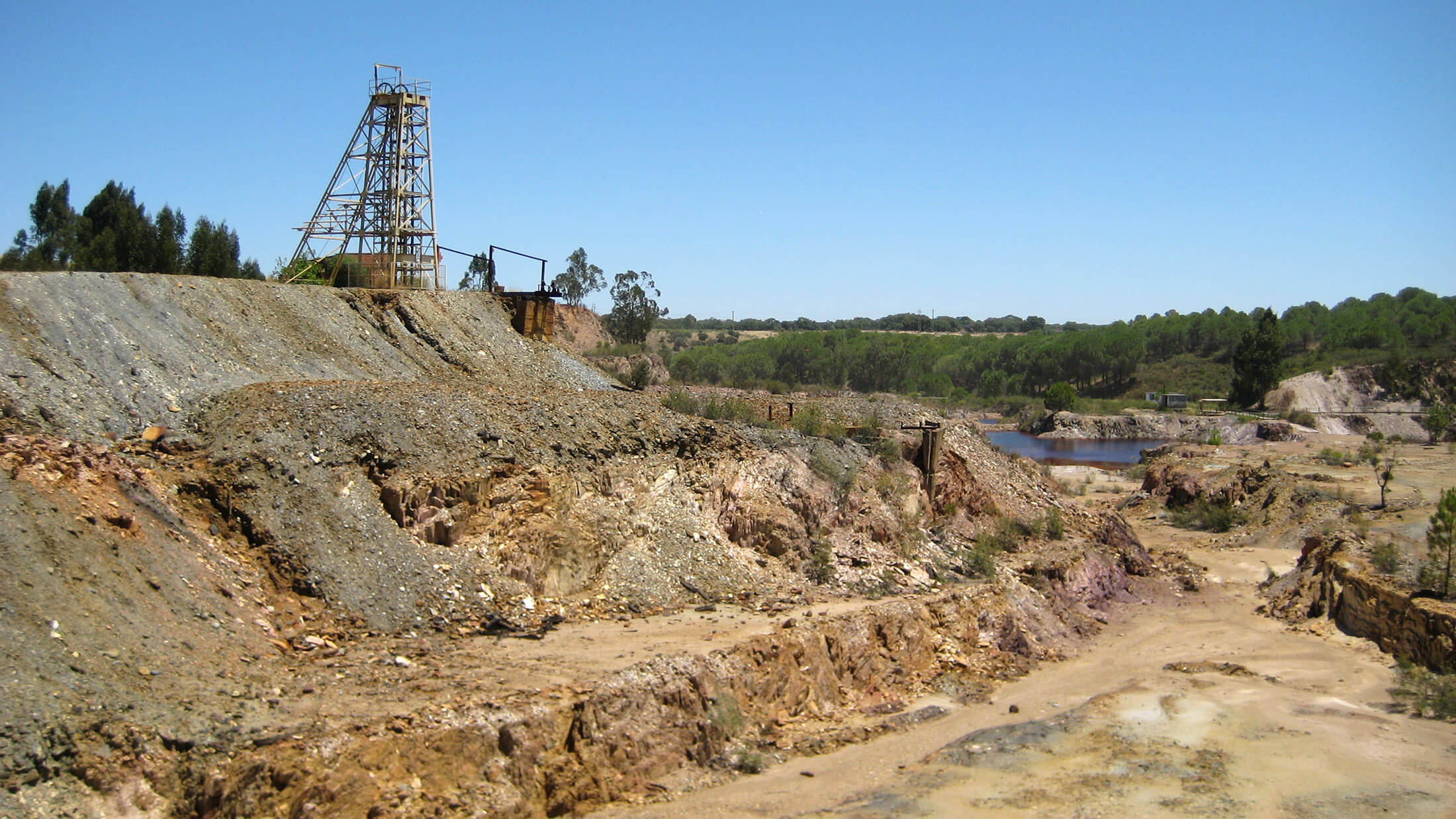
Other projects
We noticed you dropped the Oelsnitz property in Germany after completing the earn-in to 85%. Was the project just not worth your time, or was it really a budgetary decision?
A bit of both. Too much going on in our discovery areas in Portugal and Kosovo and not enough joy from our first and second pass through the Oelsnitz license area. We needed to direct our work and funds in the core areas.
Do you have an update on the Slivovo gold project in Kosovo? Back in 2020 Byrnecut decided to sell its stake to Peshter Mining but the licenses were subsequently relinquished and you are still waiting for them to be re-awarded. What’s the status of Slivovo (if it still exists) now, and what is Avrupa’s remaining exposure?
We are waiting still for the government of Kosovo to finish the process of appointing five new board members to the independent mining bureau, ICMM. This has been ongoing for more than a year now, and is getting a bit tiresome. However, there seems to be forward progress in the country’s parliament, and it seems that finally the final five applicants for the ICMM board positions have been chosen, and the ballot sent to the Kosovar parliament for ratification. However, still no date set for the finalization. Once the board does finally sit, then our application should be fairly early in the agenda, and we hope to be awarded a new 7-year exploration license. Several companies have expressed some interest in working with us on the renewed project, and I think that this would be great for Avrupa. The Slivovo deposit contains 100-125,000 ounces of surface-minable gold, and there is room for expansion of mineralization in both the known deposit, and in a number of satellite areas. We think that the possibility of doubling or more the size of the deposit is better than reasonable.
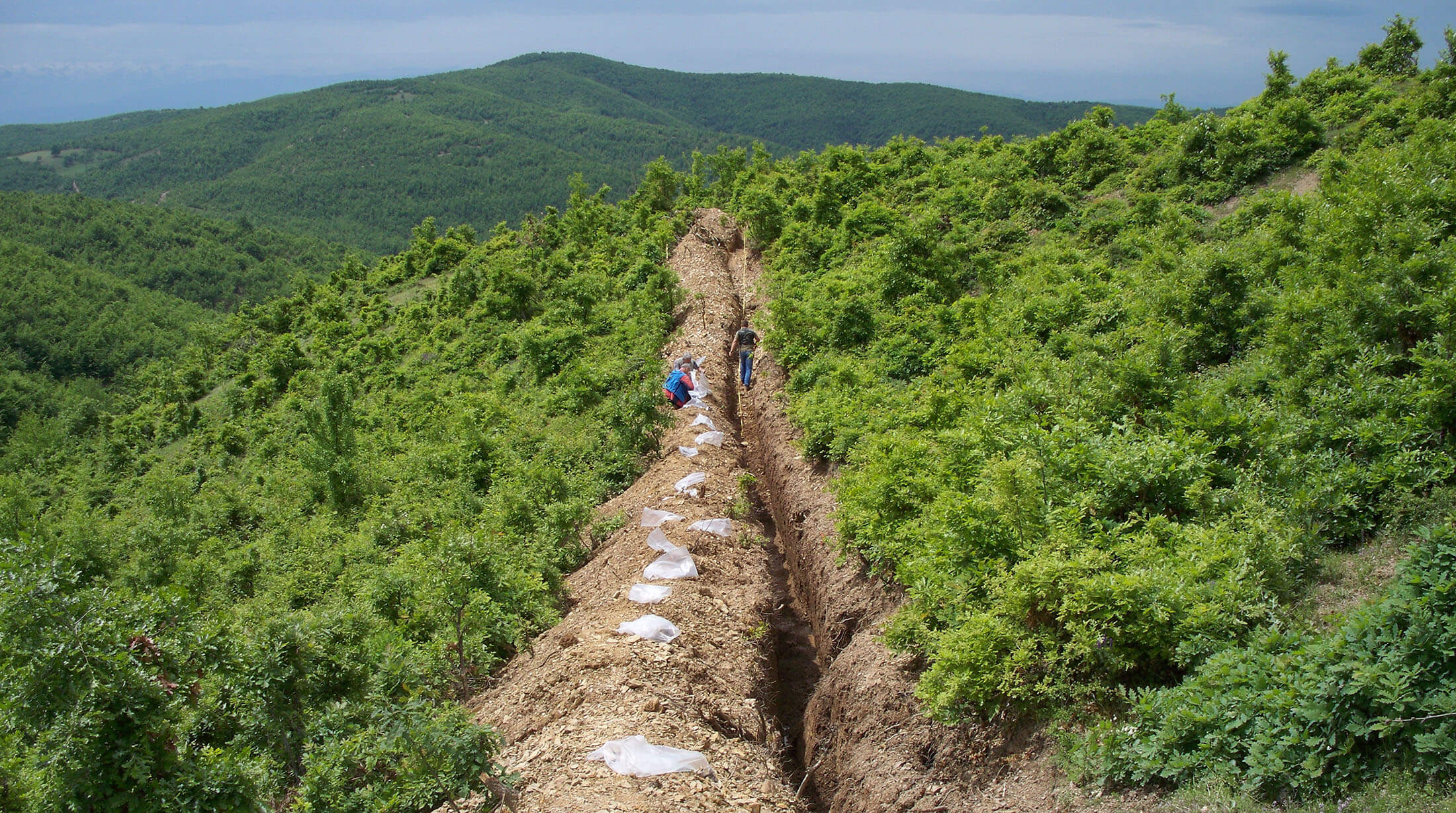
Are you still looking for other projects in Europe, or are you a bit constrained right now?
We are looking at a number of base metal +/- gold projects in several jurisdictions around stable parts of Europe. We like the idea of infusing some new excitement into the company, to go along with our Alvalade story, and hopefully Slivovo story. I think that investors have perhaps become a little complacent about these old, but still exciting, projects, and a little new blood in the advanced exploration pipeline would be a positive development for the Company.
Balance sheet
Your balance sheet remains weak and although it is very commendable you have been able to make things work on a shoestring budget, but the lack of capital also limits your possibilities to do any work on other projects. Is there a plan or a strategy to move forward to get the company in a slightly more comfortable position?
Yes, we have had a number of tough years, and the Alvalade JV has been quite helpful in keeping things going. However, as I mentioned above, infusing some new excitement into the Company with a good project will help us get important notice and eventually some well-placed funding. We are looking at several projects with both resource (copper) and exploration potential (copper, zinc, and gold). It certainly won’t hurt us if we get some more decent and better drill strikes anywhere at Sesmarias or along the targets between Sesmarias, Lousal, and Caveira on the Alvalade Project!
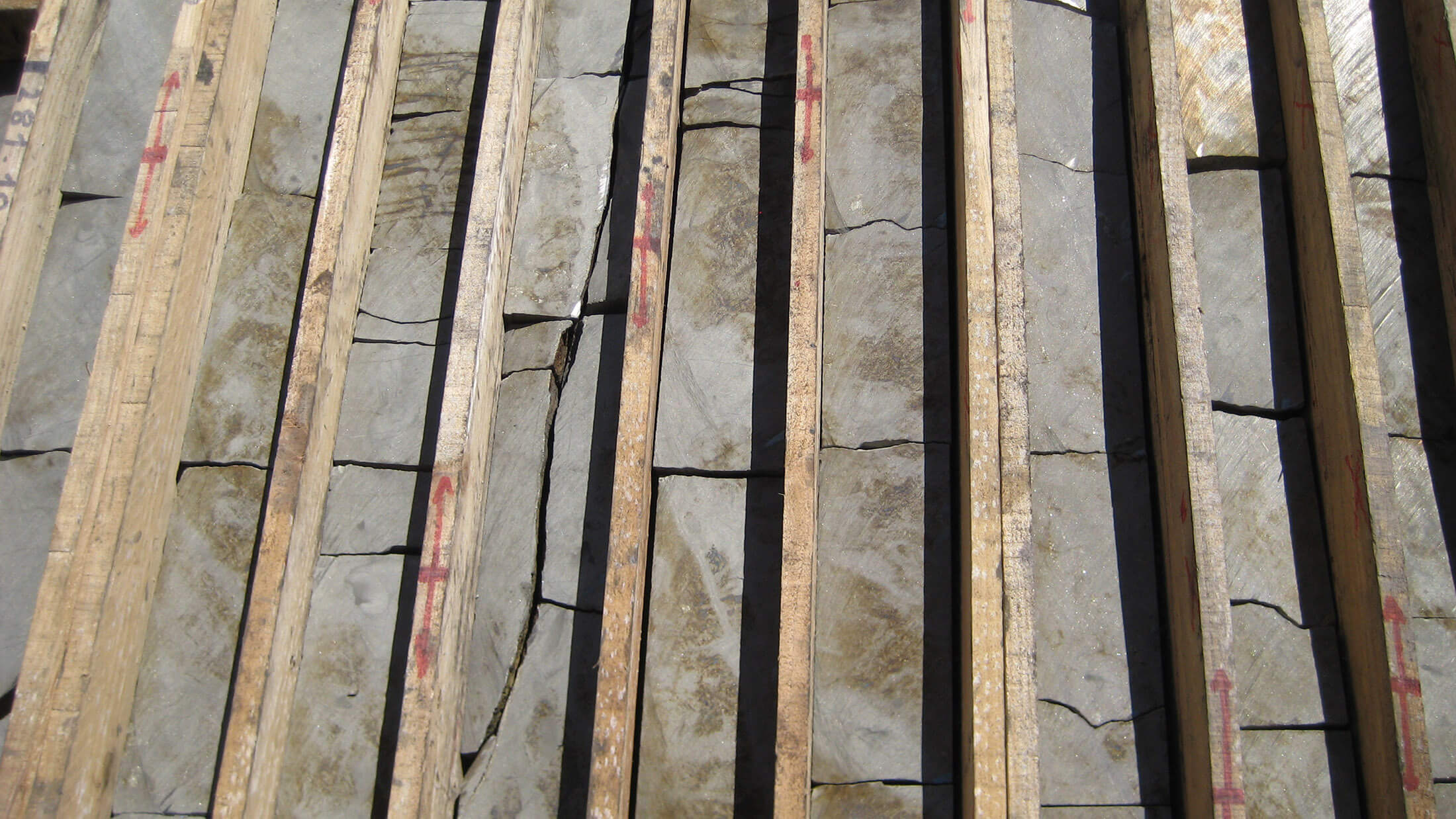
Conclusion
Avrupa Minerals seems to be very encouraged by the recent drill results at Alvalade/Sesmarias, and it looks like the acquisition of MATSA by Sandfire Resources may actually be positive for the company. Sandfire has a history of aggressive exploration in the regions it’s operating in, and considering Sandfire is forking over almost $2B to acquire MATSA, one could assume it has specific interest in the entire Iberian Pyrite Belt and that hopefully bodes well for Avrupa Minerals.
CEO Kuhn seemed to be hinting at potential new project acquisitions to fill the pipeline, so we are looking forward to see the aces he has up his sleeve.
Disclosure: Avrupa Minerals is not a sponsor of the website. The author has a long position in Avrupa Minerals. Please read our disclaimer.
